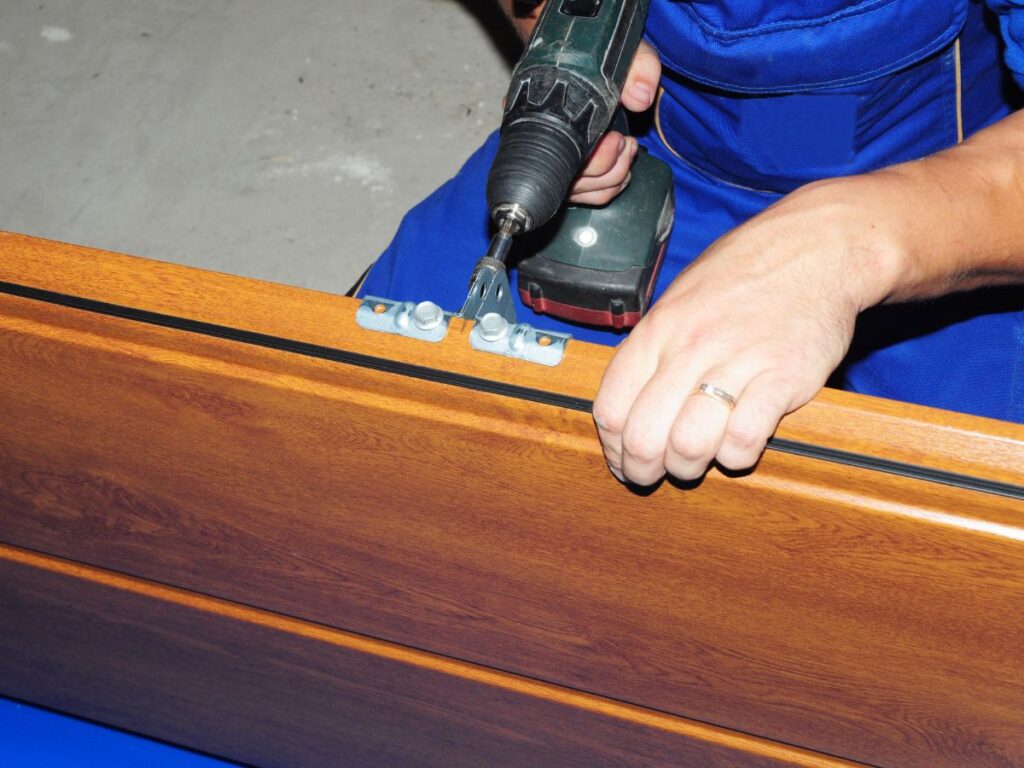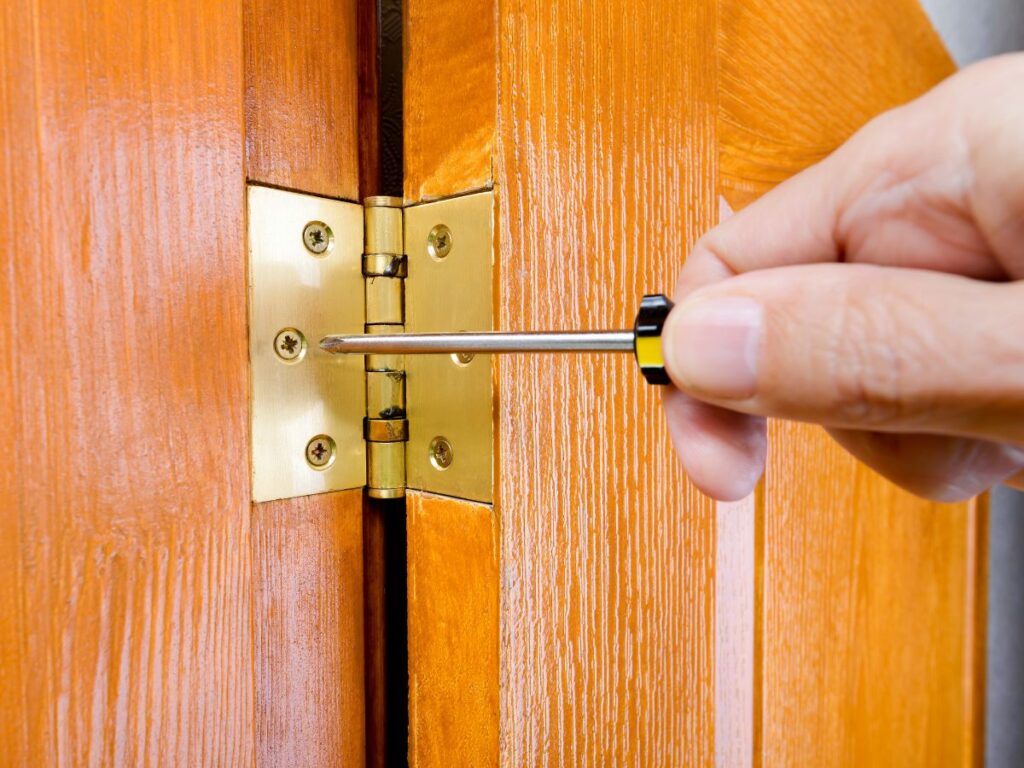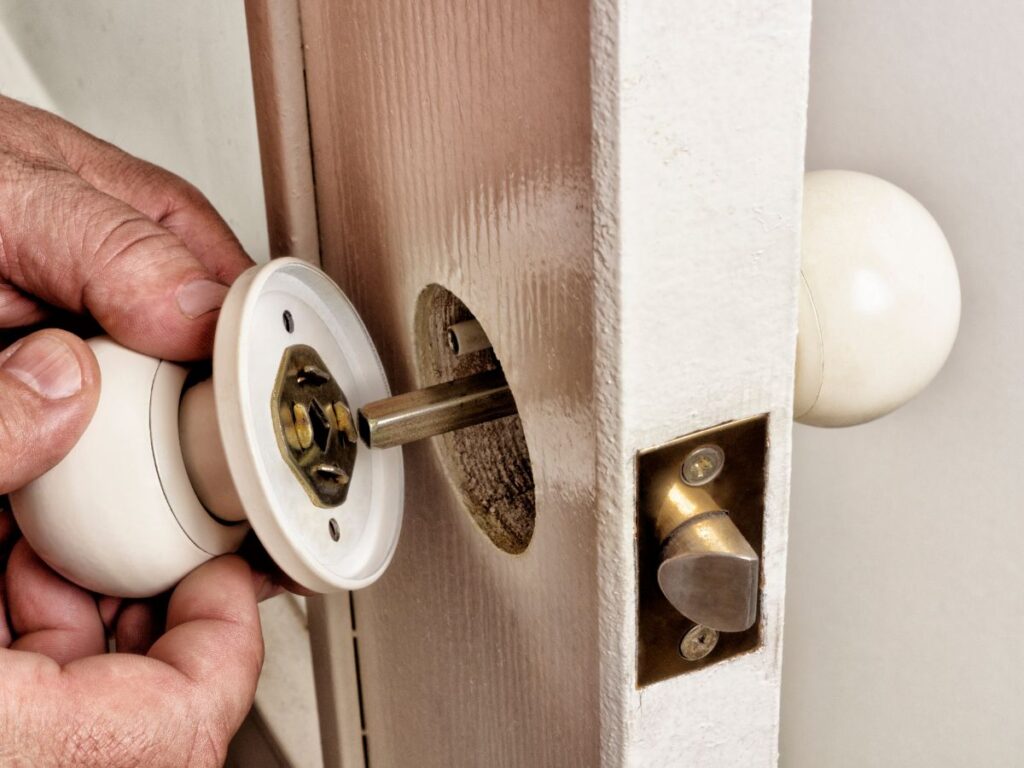Last year, one of our villa clients asked for a door that “disappeared” into the wall. It turned out to be one of their guests’ favorite features.
Hidden doors have that effect, they impress visitors while also solving functional needs.
I’ve helped hotels, inns, and home builders add these kinds of doors to their properties. What you’ll read here comes from real projects we’ve completed for businesses like yours.
In this guide, you’ll learn:
- Different design options for hidden doors
- The basic tools and steps to build one
- How to make it look seamless in your space
This is practical advice you can use right away, whether you’re planning a renovation or a new build.
So, let’s begin.
Quick Overview Chart
Before diving into the full guide, it’s useful to have a clear snapshot of the process. This table sums up the key points from each step so you can quickly see what’s involved from start to finish, and why each step is important.
| Step | Key Focus | Main Actions | Why It Matters |
| 1. Define the Purpose and Door Type | Set the goal and style | Decide why you need it and choose the right door type | Aligns design and function with property needs |
| 2. Inspect and Prepare the Wall | Check structure and readiness | Inspect wall, measure space, clear area | Prevents structural issues and costly rework |
| 3. Gather Required Tools and Materials | Have everything ready | List tools, source materials, prepare hardware | Avoids delays and keeps workflow smooth |
| 4. Frame and Reinforce the Opening | Build strong support | Construct frame, reinforce load points, secure base | Ensures long-term stability of the door |
| 5. Build or Modify the Door Panel | Create the main door body | Choose core, cut to size, add structural or design elements | Provides strength and the desired look |
| 6. Install Hinges and Mount the Door | Attach for smooth movement | Position hinges, align door, adjust for level | Guarantees smooth and even operation |
| 7. Install Latch and Locking Mechanism | Add closure and security | Fit latch/lock, test operation, adjust as needed | Keeps the door secure and functional |
| 8. Apply Final Concealment Touches | Blend with surroundings | Match finishes, add trim, integrate hidden details | Completes the hidden effect for aesthetics |
| 9. Test, Adjust, and Maintain | Final checks and upkeep | Test movement, fine-tune, set maintenance routine | Extends the life and performance of the door |
By following each step in sequence, you’ll move from planning to a fully functional and well-hidden door that suits your property. To explore the full details, examples, and practical tips for each stage, read the complete guide below.
Step#1 Define the Purpose and Door Type
Before you start cutting or building anything, you need to know exactly why you want the hidden door and what kind will work best. I’ve seen projects run into delays because the purpose wasn’t clear from the start. If you get this right now, the rest of the build will go much smoother.
Identify the Main Purpose
- Add Privacy: Many hotels or guesthouses use hidden doors to separate staff-only areas from guest spaces. It keeps operations discreet while maintaining the guest experience.
- Create Extra Storage: A hidden door can open to a storage room without disrupting the look of the hallway or lobby. This is especially useful in smaller properties where every square meter matters.
- Enhance Security: For villas or homes, a concealed door can hide valuable equipment or documents. It’s an extra layer of protection that doesn’t draw attention.
- Improve Guest Experience: Guests often appreciate small design surprises. A well-made hidden door can be a talking point that adds to the property’s charm and reviews.
Choose the Right Door Type
- Bookshelf Door: Works well in lounges, libraries, or offices. It offers both function and a classic, timeless look.
- Wall Panel Door: Best for a sleek, modern style. The panel blends with the wall so visitors might not even notice it’s there.
- Mirror Door: Ideal for bedrooms or dressing rooms. It doubles as a functional mirror while hiding an entry or storage area.
- Custom Panel with Decorative Finish: Can match the theme of your property, wood grain for a rustic inn or painted paneling for a boutique hotel.
Step#2 Inspect and Prepare the Wall
Before installing a hidden door, the wall must be checked properly. I’ve seen projects face delays because this step was skipped or rushed. A careful inspection now will save you time later.
This is more than finding a space, you’re confirming the wall can hold the weight, support the hinges, and allow the door to work smoothly.
Check Wall Structure and Condition
- Identify Load-Bearing Walls: Cutting into a load-bearing wall without a plan can damage the building. Have an engineer inspect it if you’re unsure.
- Inspect for Damage: Look for cracks, damp spots, or soft areas. These need to be repaired before you start building.
- Review Existing Openings: If there’s already a doorway or recess, it may be possible to adapt it. This can save time and money.
Evaluate Space and Clearance
When I work on projects for villas or hotels, I start by confirming there’s enough clearance for the door to open without hitting anything. Even the best design will fail if it scrapes the floor or bumps into furniture.
First, measure the swing area. Check both inward and outward options to decide which will work best. Then, look at wall thickness, thicker walls make it easier to hide hinges and frames, while thinner ones may need reinforcement.
Finally, think about space for hidden parts like latches or concealed hinges. If there’s not enough room inside the wall or frame, you’ll need to adjust your design before construction begins.
Prepare the Wall for Installation
- Mark the Opening Clearly: Use a pencil and level to outline the door placement. Double-check before cutting.
- Clear the Surrounding Area: Remove furniture, decor, or anything that could get in the way during the building.
- Address Electrical or Plumbing Lines: If you find wires or pipes, plan to move them before starting installation.

Step#3 Gather Required Tools and Materials
Having everything ready before you start makes the build faster and smoother. I’ve been on projects where missing just one hinge type caused hours of delay. You want your team or contractor to move from step to step without stopping to find something.
Essential Tools
- Tape Measure and Level: Accuracy matters here. A door that’s even a few millimeters off will not close properly.
- Pencil and Marking Tools: For outlining cuts and hardware placement. Use something that wipes away cleanly.
- Drill and Drill Bits: Needed for hinges, latches, and frame reinforcement. Keep both wood and masonry bits on hand in case you hit a concrete surface.
- Saw (Circular Saw, Jigsaw, or Handsaw): For cutting panels, shelves, or frame components. Choose based on the material and the precision you need.
- Screwdrivers (Manual and Powered): You’ll be driving screws throughout the build. A powered screwdriver speeds up the work, but manual is useful for final tightening.
- Hammer and Rubber Mallet: For tapping frames or components into place without damaging surfaces.
- Clamps: Hold pieces steady while cutting, drilling, or gluing. This makes work safer and more accurate.
- Safety Gear: Gloves, goggles, and ear protection. Even small jobs produce dust, sharp edges, and noise.
Common Materials
| Material | Purpose | Notes |
| Hinges (Pivot or Concealed) | Allows the door to swing or rotate | Pivot hinges are best for heavy doors like bookshelves; concealed hinges are ideal for flush designs. |
| Door Panel or Base Structure | Forms the main body of the hidden door | Can be a solid core door, bookshelf frame, or custom wood panel. |
| Framing Lumber | Supports the opening and provides structure | Choose straight, strong pieces to avoid warping. |
| Plywood or MDF Panels | Used for panel doors, backing, or shelf surfaces | MDF gives a smooth finish, plywood is more durable for heavy use. |
| Trim or Molding | Hides gaps between the door and wall | Match existing wall style for a seamless look. |
| Screws and Anchors | Secure hinges, frames, and panels | Use heavy-duty options for long-term stability. |
| Latch or Magnetic Catch | Keeps the door closed without visible hardware | Magnetic options are easy to use and stay hidden. |
| Locking Mechanism (Optional) | Adds extra security | Can be a keyed lock, keypad, or hidden latch. |
| Finish Materials | Makes the door blend with surroundings | Includes paint, stain, veneer, or wallpaper. |
| Adhesives and Wood Glue | Strengthens joints and connections | Use high-quality wood glue for long-lasting bonds. |
| Sandpaper or Sander | Smooths surfaces before finishing | Helps achieve a professional look. |
Having all these on hand before starting avoids interruptions and helps maintain consistent quality. Once this step is complete, your crew can move straight into framing and reinforcement without waiting for supplies.
Step#4 Frame and Reinforce the Opening
This is the stage where the hidden door gets its solid base. Without proper framing, even the best-looking door will sag or stick over time. I’ve worked on projects where rushing this step meant expensive adjustments later.
Your goal here is simple: create a strong, square, and stable opening that supports the door and hardware for years to come.
Build a Strong Frame
- Use Quality Lumber: Choose straight, solid pieces for the frame. Warped or weak wood will cause alignment problems later.
- Cut to Exact Measurements: Follow the opening dimensions you confirmed earlier. A tight, accurate fit will make installation easier.
- Assemble Securely: Fasten each piece firmly using screws, not nails, for better long-term stability. Pre-drill holes to prevent splitting.
- Check for Square: Use a level and square tool to confirm all corners are at 90 degrees. This ensures the door will swing evenly.
Reinforce Load and Stability
- Add Support Studs: Install extra vertical studs if the wall is thin or if the door will be heavy. This distributes the weight evenly.
- Secure to Floor and Ceiling: Anchor the frame to both the floor and ceiling joists. This prevents shifting when the door is in use.
- Use Metal Brackets for Strength: Brackets at the corners and hinge points help hold the frame in place, especially in high-use areas.
- Check for Flex: Press on different parts of the frame to see if there’s movement. A rigid frame will keep the door aligned.
Prepare for Hardware Installation
- Mark Hinge Placement: Measure and mark where each hinge will sit. Accurate placement avoids stress on the frame.
- Plan for Latch or Lock: Decide where the latch or lock will be installed. This is easier to plan before the wall is closed in.
- Allow Space for Concealment Trim: Leave room around the edges for molding or paneling that will hide the door.
- Double-Check Clearances: Make sure the frame leaves enough clearance for the door to open smoothly without rubbing.
Step#5 Build or Modify the Door Panel
This is the part where the hidden door starts to take shape. Whether you’re building a panel from scratch or adapting an existing door, the goal is to make it both sturdy and easy to conceal.
From my experience, how well this step is done will decide how smooth the door feels when it opens and how convincing the “hidden” effect will be.
Choose and Prepare the Base
- Select the Right Core Material: A solid core door is heavier but feels premium and lasts longer. Hollow core doors are lighter but may need extra reinforcement.
- Match the Dimensions to the Frame: The door must be slightly smaller than the opening for smooth operation. Allow for hinge clearance and trim.
- Cut and Shape as Needed: If you’re modifying an existing panel, trim it carefully to fit. Sand the edges for a clean finish before attaching hardware.
- Check for Warping: Lay the panel flat and check for bends or twists. A warped panel will never sit flush in the frame.
Add Structure and Concealment Features
If you’re building a bookshelf door, the shelves themselves add weight, so the frame inside the panel must be strong. I’ve seen good results using a combination of plywood backing and hardwood edges.
For a wall panel door, the focus shifts to blending. The surface needs to match the wall exactly, which might mean applying veneer, matching paint, or adding the same molding as the surrounding wall. Even small differences in color or texture can give away the door’s location.
In both cases, think ahead about where hinges, latches, and locks will go. It’s easier to drill and reinforce these spots before any decorative surface is applied. That way, you won’t damage the finish later.

Step#6 Install Hinges and Mount the Door
Mounting the door is where all the earlier work comes together. This is also the stage where precision really matters. Even a few millimeters off can cause the door to drag or fail to close flush.
I’ve worked on installs where taking an extra 15 minutes to align hinges perfectly saved hours of adjustment later.
Position and Attach the Hinges
- Mark Exact Hinge Locations: Measure and mark hinge spots on both the door and frame. Consistent spacing from top and bottom keeps weight balanced.
- Pre-Drill Screw Holes: This prevents the wood from splitting and makes installation smoother. Use a drill bit slightly smaller than the screw diameter.
- Use the Right Type of Hinge: Pivot hinges work well for heavier or thicker doors like bookshelves, while concealed hinges create a flush, invisible look for panels or mirrors.
- Check for Level Before Tightening: Lightly attach all hinges, then check with a level before fully securing them. This avoids having to remove and reattach later.
Mount and Align the Door
- Lift and Position the Door Carefully: Use 2 people or lifting supports for heavier doors. This keeps the hinges and frame from being stressed during installation.
- Test Swing and Clearance: Open and close the door several times to check for smooth movement. Look for scraping, rubbing, or uneven gaps.
- Make Minor Adjustments: Loosen screws slightly to shift the door as needed. Tighten them again once the alignment is correct.
- Secure for Long-Term Use: Once the door swings smoothly, fully tighten all screws and inspect hinge connections. Reinforce with longer screws if the door sees frequent use.

Step#7 Install Latch and Locking Mechanism
This step adds security and keeps the hidden door closed when not in use. The right latch or lock will depend on your door type, its location, and how you want it to function.
I’ve worked with clients who preferred a simple magnetic catch for staff-only spaces, and others who needed a discreet but secure lock for private storage rooms. The goal is to match function with the level of security you need.
Choose the Right Latch or Lock
- Magnetic Catch: A quiet, simple option that keeps the door shut without visible hardware. Works best for doors that don’t need high security.
- Mechanical Latch: Provides a stronger hold than magnets. Can be hidden in the frame so it doesn’t disrupt the door’s look.
- Keyed Lock: Ideal for areas with restricted access. Vallisco often integrates keyed locks directly into the design for a seamless look of their hidden door.
- Electronic or Keypad Lock: Useful for properties that need quick code changes for different users, such as hotels or guesthouses.
Install and Test the Mechanism
- Mark the Placement: Measure and mark exactly where the latch or lock will sit. Consistent alignment with the strike plate ensures smooth operation.
- Pre-Drill for Hardware: Drilling before installing prevents the material from splitting and allows for cleaner cuts.
- Secure the Mechanism Firmly: Use the correct screws and tighten them fully. Loose hardware will wear down quickly with use.
- Test Multiple Times: Open and close the door several times to confirm smooth engagement. Make adjustments if the latch feels too tight or too loose.

Step#8 Apply Final Concealment Touches
This is where your hidden door becomes truly “hidden.” The goal is to make it blend so naturally with the surrounding wall or furniture that no one suspects it’s there.
From my own projects, I can tell you that these finishing details are what leave a lasting impression. Done right, they not only hide the door but also elevate the overall look of space.
Match the Surrounding Surface
- Use the Same Paint or Finish: Match the door’s surface color and texture to the wall or furniture. Even a slight difference in shade can reveal the door’s outline.
- Apply Matching Trim or Molding: Extend existing trim lines across the door. This breaks up the visual edges and makes the door harder to spot.
- Continue Wallpaper or Paneling: If the wall is wallpapered or paneled, carry that material onto the door’s surface for a seamless look.
- Blend Hardware with the Design: Choose concealed or color-matched handles and hinges so they don’t stand out.
Add Details for a Seamless Look
For high-end properties like boutique hotels or villas, small details make a big difference. Continuing baseboards across the door, for example, creates a convincing visual break.
Lighting also plays a role. Position lights so they don’t cast shadows on the door edges, which could reveal the outline. I’ve even seen clients place furniture, artwork, or plants near (but not blocking) the door to naturally distract attention from it.
Integrating these concealment details into the build itself, making installation faster and the finished look more convincing. By thinking about these touches early, you’ll avoid last-minute adjustments and achieve a smooth, professional finish.
Step#9 Test, Adjust, and Maintain
Once the hidden door is installed, it’s time to make sure it works as intended. Skipping a proper test can lead to callbacks, which no one wants in a busy project schedule. The difference between a good installation and a great one often comes down to the time spent fine-tuning and maintaining the door after it’s in place.
Perform Initial Testing
- Open and Close Repeatedly: Test the swing several times to check for smooth movement. Listen to unusual sounds that could mean hardware is under strain.
- Check Alignment: The door should sit flush with the wall or surrounding structure when closed. Misalignment can indicate an uneven frame or hinge adjustment.
- Inspect Latch or Lock Operation: Make sure the latch or lock engages easily. A stiff mechanism can wear out faster over time. Vallisco designs many of their hidden doors with hardware that allows smooth engagement from day one.
- Look for Gaps or Uneven Edges: Gaps can ruin the hidden effect and allow dust or light through. Adjust the trim if necessary.
Set Up a Maintenance Routine
- Regularly Inspect Hardware: Hinges, latches, and locks should be checked every few months. Tighten screws and lubricate moving parts as needed.
- Clean Tracks and Edges: Dust and debris can affect how smoothly the door moves. Use a soft brush or cloth to keep it clear.
- Repaint or Refinish as Needed: Over time, walls and doors may fade or scuff. Repainting keeps the hidden effect strong.
- Plan for Professional Servicing: For high-traffic areas like hotels, schedule professional checks once a year. This keeps the door safe and reliable.
Conclusion
That villa project taught me one thing, when done right, a hidden door becomes more than an entryway. It adds value, privacy, and character to a property.
You now have the full process, from defining your goal to final maintenance checks. Every detail in the guide is there to help you get it right the first time.
Vallisco’s expertise in manufacturing hidden doors makes them an ideal partner for your next build or renovation.
If you want a result that blends in perfectly and works every day, contact us today!
Check Out These Additional Resources
Need more ideas? Browse through our extended range of products and discover something new:
Still haven’t found what you’re looking for? Don’t hesitate to contact us. We’re available around the clock to assist you.







